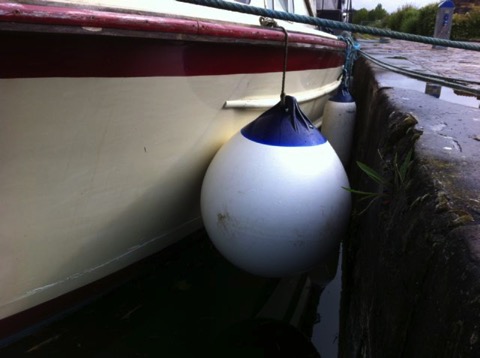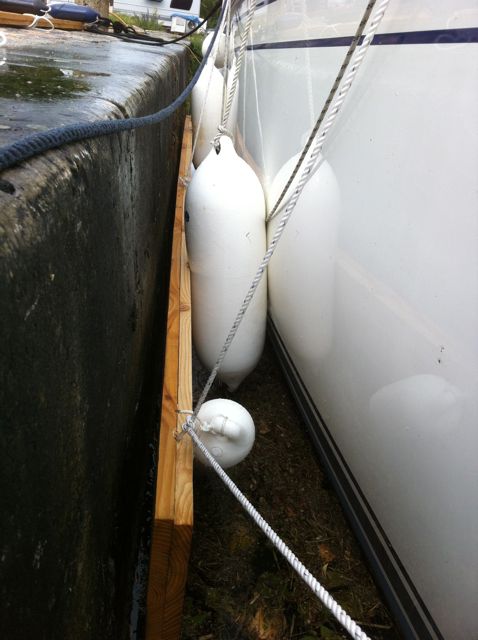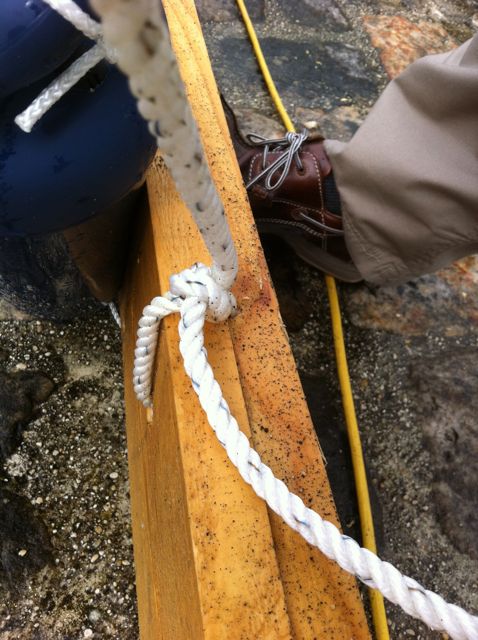Canals - Fender strategies
The French Canals are a destination we have wanted to cruise for many years. Five thousand miles of canals criss-cross the country and also connect to Belgium, Holland, Germany and beyond. Altogether you have thousands of miles to explore and many years worth of cruising in the European waterways. For us we have planned a 3 month excursion crossing France - a leisurely journey with plenty of time to stop and sample the wines, cheeses and pretty french villages.
Canal System
Some of the canals we will travel on were built 400 years ago, and most were designed for barges up to 5.2 meters wide by 1.8 meters deep and 38 meters long. The barges are big and square and just fit into the locks - no room for niceties like fenders. For the modern yacht that doesn’t want to scratch her topsides we will need a system to work safely through the locks. Distant Shores II is 4.2 meters wide so we will have just 0.4 meter on either side including fenders. If your boat is square and made of steel then you may not need any of this!!
Design Criteria
- entering the lock - approaching a lock we will be moving slowly and trying not to hit either side so we will need fenders that allow us to nudge the side of the lock and not slide up out of the way. Some people have used a huge rope hung like a belt around the wides point (generally the gunwales). We have opted for fender boards hung down outside the fenders to absorb friction of the walls and protect the fenders. We tie the board with a forward line as well so it won’t swing back if we scrape the wall moving in the lock.
- rising up or going down in the locks - going up in locks is usually rougher since the turbulence of the incoming water can push the boat around. Most sailboats have narrow bows and sterns so need to have some large fenders near the corners to protect against the bow or stern hitting the lock. The huge “tear-drop” fenders work well for this and also for powerboats wishing to protect their flared bows.

- low lock walls - some locks tend to fill up quite high so there isn’t much wall left at the top of the lift. In this case there might be just a few inches left of lock wall and fenders may all pop out. So it is important to be ready with some protection down near the water line.
Here is our current version of the system (Version 3.3?)

Fender Board Notes
In the upper picture you can see the support line holding the board up and the line going forward to stop is swinging back when we rub the lock wall on the way on and out of the lock. Some people use this same system for holding a bunch of fenders. One line from the bow down to the bottom of the first fender and then running aft tethering each fender to they don’t swing back.
Fender boards will scrape along the rough lock walls. It is important that lines tying the boards must not be on the outside of the board or they will quickly chafe through. There are various solutions to this. I made our 2 inch thick board from 2 times 1inch boards. I drilled holes through the inner board for the lines and attached the outer board to that with screws and glue. There will be a considerable wearing down of the outer board by the time we are through the locks.

Canal System
Some of the canals we will travel on were built 400 years ago, and most were designed for barges up to 5.2 meters wide by 1.8 meters deep and 38 meters long. The barges are big and square and just fit into the locks - no room for niceties like fenders. For the modern yacht that doesn’t want to scratch her topsides we will need a system to work safely through the locks. Distant Shores II is 4.2 meters wide so we will have just 0.4 meter on either side including fenders. If your boat is square and made of steel then you may not need any of this!!
Design Criteria
- entering the lock - approaching a lock we will be moving slowly and trying not to hit either side so we will need fenders that allow us to nudge the side of the lock and not slide up out of the way. Some people have used a huge rope hung like a belt around the wides point (generally the gunwales). We have opted for fender boards hung down outside the fenders to absorb friction of the walls and protect the fenders. We tie the board with a forward line as well so it won’t swing back if we scrape the wall moving in the lock.
- rising up or going down in the locks - going up in locks is usually rougher since the turbulence of the incoming water can push the boat around. Most sailboats have narrow bows and sterns so need to have some large fenders near the corners to protect against the bow or stern hitting the lock. The huge “tear-drop” fenders work well for this and also for powerboats wishing to protect their flared bows.

- low lock walls - some locks tend to fill up quite high so there isn’t much wall left at the top of the lift. In this case there might be just a few inches left of lock wall and fenders may all pop out. So it is important to be ready with some protection down near the water line.
Here is our current version of the system (Version 3.3?)
- a 4 meter fender board (each side) that is a foot high (13 feet long X 12 inches high and 2 inches thick). Small fenders attached to the board as a backup in case the main fenders slide out. A forward line to keep it in place as we move along the lock wall.
- low “swimming” fender boards as a last defence against very low lock walls if the lock is overfilled and our fenders pop out
- large fenders at bow and stern to protect in the event of the bow or stern swinging in to the wall

Fender Board Notes
In the upper picture you can see the support line holding the board up and the line going forward to stop is swinging back when we rub the lock wall on the way on and out of the lock. Some people use this same system for holding a bunch of fenders. One line from the bow down to the bottom of the first fender and then running aft tethering each fender to they don’t swing back.
Fender boards will scrape along the rough lock walls. It is important that lines tying the boards must not be on the outside of the board or they will quickly chafe through. There are various solutions to this. I made our 2 inch thick board from 2 times 1inch boards. I drilled holes through the inner board for the lines and attached the outer board to that with screws and glue. There will be a considerable wearing down of the outer board by the time we are through the locks.

blog comments powered by Disqus